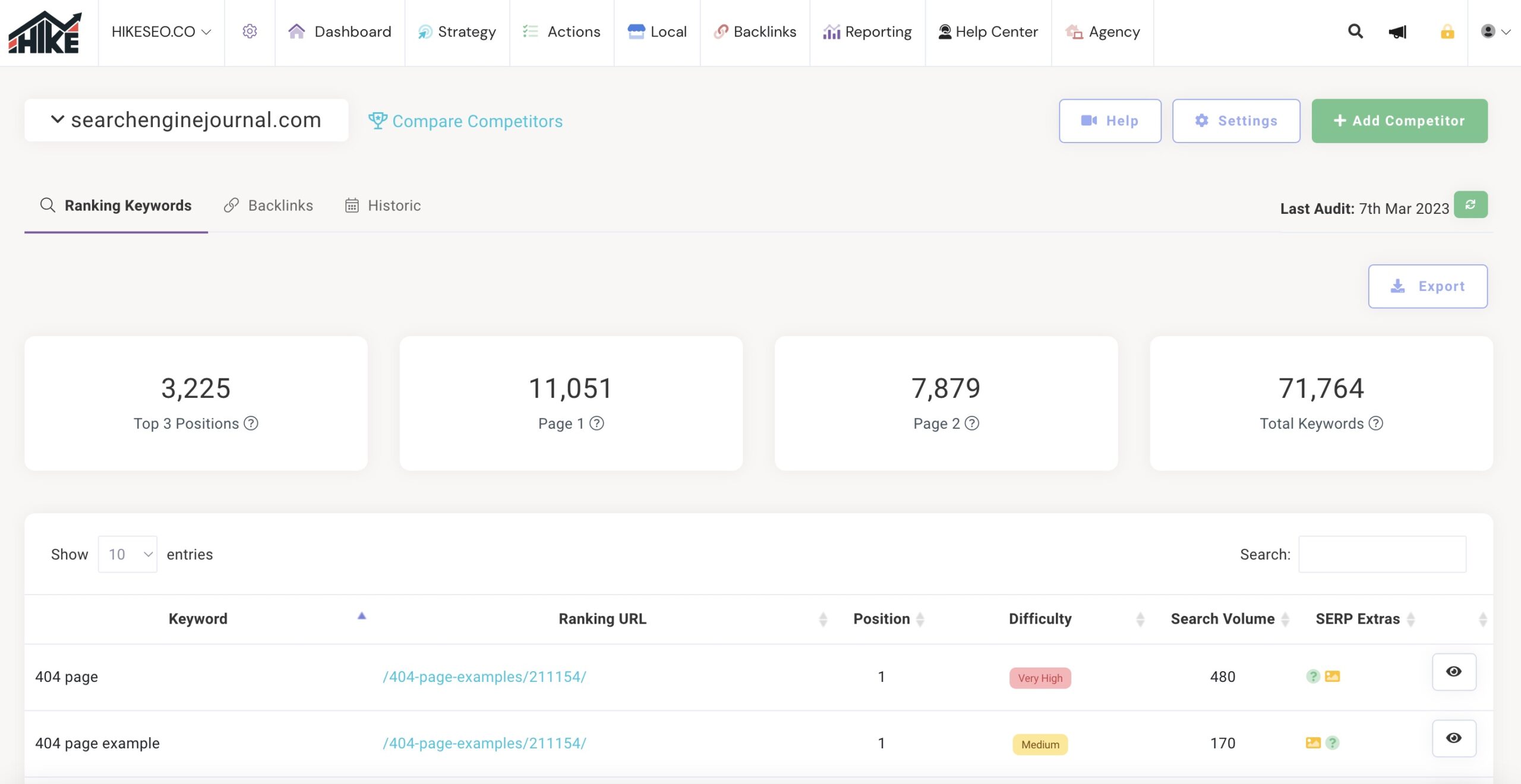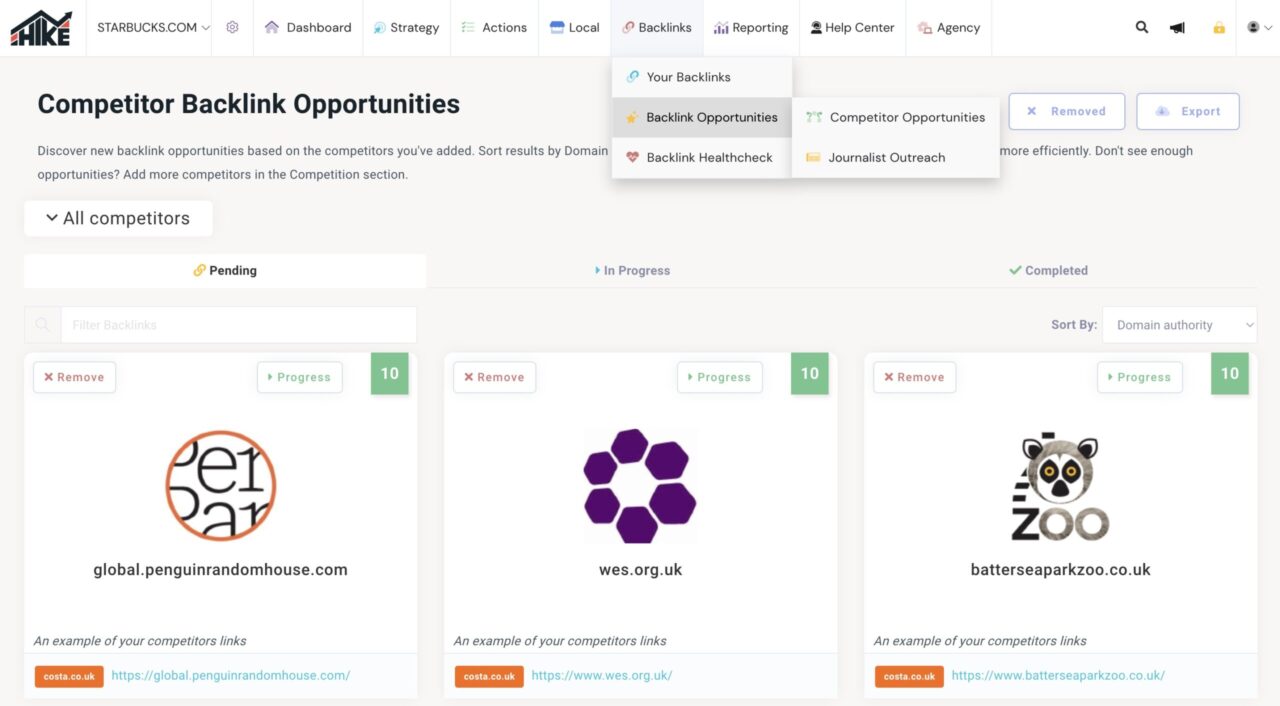Competitor Research for Beginners
What is Competitor Research?
Competitor research refers to the process of analyzing and evaluating the SEO strategies, tactics, and performance of your competitors to improve your own website's search engine visibility, rankings, and organic traffic. This research helps businesses uncover gaps and opportunities in their SEO strategy and adapt to the constantly changing search engine algorithms.
You can conduct Competitor Research and analyse your competitors through the Competitor Analysis section in Hike.

Why is Competitor Research Important?
It’s important to do competitive research for several reasons so that you can get the best possible results in your SEO efforts:
Identify Strengths and Weaknesses
Analyzing your competitors' SEO strategies helps you understand their strengths and weaknesses. This knowledge enables you to take advantage of these opportunities and avoid their mistakes, ultimately improving your website's search engine performance.
Discover High-Performing Keywords and Topics
Competitor research can help you uncover keywords and topics that are driving traffic and conversions for your competitors. By targeting these keywords and creating content around relevant topics, you can enhance your website's visibility, increase organic traffic, and improve your search engine rankings.
Benchmark Your Performance
Comparing your website's SEO performance with your competitors allows you to identify areas where you are falling behind or leading. This information helps you prioritize your efforts, allocate resources effectively, and set realistic goals for improvement.
Uncover Content Gaps and Opportunities
Competitor research helps you identify content gaps on your website by analyzing your competitors' content. Filling these gaps with high-quality, relevant content can improve your website's search engine rankings and increase organic traffic. Also, by taking the best of each of your competitor’s content, you can build pages that go above and beyond what’s available, creating a valuable resource for your audience to come to and share.
Adapt to Industry Trends and Changes
Competitor research helps you stay informed about industry trends, changes in search engine algorithms, and new SEO tactics. This knowledge allows you to adapt your SEO strategy to remain competitive and maintain or improve your website's search engine rankings. You can see in real-time how your competitors are evolving and get insights as to how you can pivot your strategy accordingly.
Improve Your Link-Building Strategy
Analyzing your competitors' backlink profiles can reveal high-quality and relevant websites to target for link-building efforts. This can help you build a stronger backlink profile and improve your website's search engine rankings.
The Competitor Backlink Opportunities section in Hike can help to improve your link-building strategy.

The 5-Step Competitor Research Process
To conduct effective competitor research, there are five steps to follow which we’ll cover in more detail below.
Identify Your SEO Competitors
The first step is to first discover and identify your search competitors. Determine who your direct and indirect competitors are based on the keywords and search queries relevant to your industry or market. These competitors are not only businesses offering similar products or services but also websites or content that rank highly for the same keywords as your website.
You can use Google to type in your keywords and see which competitors are in the top 5 results. Then check out those pages and websites to see whether they are a direct competitor (in the same industry), or an an indirect competitor (different industry, but has content relating to your industry).
Save these competitors in a spreadsheet for later reference. You’ll need this list in the future for gap analysis and other deeper research.
Analyse Your Competitors' On-Page SEO
The next step is to evaluate your competitors' website structure, content, keyword usage, meta tags, header tags, internal and external linking, and other on-page SEO elements that contribute to their search engine rankings.
One of the most insightful things to look into more closely is their website structure - how have they categorized and organized their content? Do they have a logical hierarchy of pages? How do they structure their content? Do they use internal linking intelligently to make it easy for readers to navigate through their site? How easy and engaging is their website to use?
Note down your insights next to each competitor in the spreadsheet you created previously.
Analyse Your Competitors' Off-Page SEO
Next, you’ll need to assess your competitors' backlink profiles, social media presence, and other off-page SEO factors that contribute to their online authority and rankings. You can use SEO tools such as Hike SEO to view your competitors’ backlinks to find websites that would be great opportunities for backlink building for your website. Also, seeing how many backlinks and unique referring domains your competitors have gives you an indication of how difficult it would be to compete against them. Typically, the more backlinks and unique referring domains a website has, the more authority it has and the easier it is for it to rank for keywords.
Identify Content Gaps and Opportunities
Analyze your competitors' content to find topics, keywords, or content formats that they are performing well in and that your website might be lacking. When you do this for multiple competitors, you can start seeing gaps that may be occurring across these sites and this could reveal valuable opportunities for your content strategy.
Many SEO tools have a content gap tool that allows you to easily and quickly identify areas where your website may be lacking in topics, and areas where your competitors are weak in content, that you can start taking advantage of.
Benchmark and Track Performance
Finally, now that you know where your website is in the context of your competitors, it’s important to set a benchmark and track performance over time, so you can measure the progress that your website is making with your SEO efforts.
Defining important KPIs (key performance indicators) such as total ranking keywords on page 1, the total number of backlinks, the total number of unique referring domains, and total organic traffic are among many you should consider tracking over time.
Hike + Competitor Research
Performing competitor research can be made much easier when using Hike SEO, an SEO platform designed from the ground up with small businesses in mind. The competitor analysis tool shows you keywords that your competitors are ranking for as well as backlinks that they have. It also allows you to compare competitors with your website to see how ranking keywords and backlinks stack up.
Hike is perfect for the beginner, even if you don’t have any technical experience or prior SEO knowledge, it makes it simple and actionable, within the time you have available each week.
Try Hike today risk-free, with our 14-day money-back guarantee!